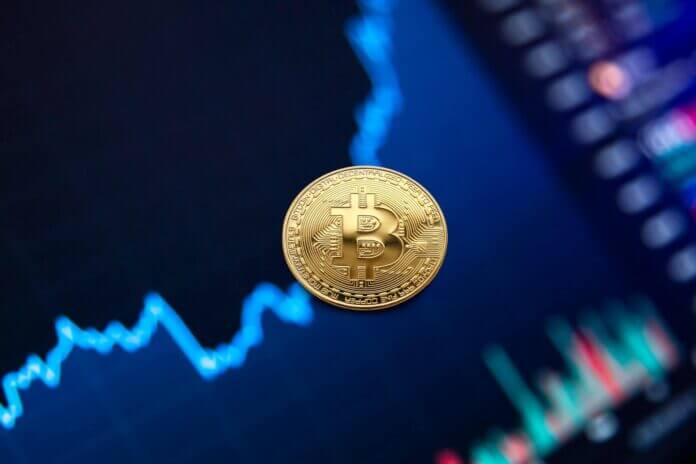Blockchain can be described as a new kind of protocol that allows digital information to be distributed but not copied. It was designed to create the world’s most popular cryptocurrency, Bitcoin.
The original technology was developed in 2009 by Satoshi Nakamoto (a pseudonymous person or group of people). It provides a way for untrusted parties to agree on a set of facts and make sure nobody tampers with them.
One use is transferring money or anything of value securely without involvement from banks, credit card companies, and others long involved in such transactions. Blockchain has become one of the hottest topics around due to its association with cryptocurrencies like Bitcoin.
Some Questions that Need Answers
What are blockchains used for currently?
The first thing I thought of when I heard about blockchain technology is Bitcoin. One reason that cryptocurrencies have been around for so long without being hacked is that they are built on a decentralized network called a blockchain, which can verify all transactions and secure the records from manipulation.
A lot of startups see the implications of blockchains not only in finance but also in other sectors such as social media, energy, transport, healthcare, legal marijuana/weed industry and even voting systems.
Also Read: What are NFTs? Everything you need to know
Why was the concept created?
It was originally designed to make purchasing bitcoin easy via an open-source system people could trust – where there would be no need for banks or governments to record purchases as transactions go directly from one wallet to another. In principle, you should be able to transfer money or information without being monitored, traced, or hacked.
Who is using this technology?
About 70% of large banks are experimenting with blockchain to simplify back-office settlement systems. However, the biggest potential impact could be in the way we store and share personal information online.

Blockchain can make interactions more secure while also taking away control from middlemen like Facebook and Google, which profit by collecting and selling our data (We will get into this later). It has application in almost any industry that relies on transactions or records keeping, especially financial services but also insurance, health care, energy trading, and many others.
Also Read: What is Quantum Computing? Explained
This makes it one of the hottest tech trends around at the moment, which is why you hear about it mostly when it comes to cryptocurrencies (Blockchain + digital assets = cryptocurrency).
What technologies go into Blockchain?
Blockchain technology is a combination of two key elements: cryptography and P2P networking. Cryptography ensures the security of every record stored in the chain, so no third party can access it without a user’s authorization.
A P2P network spreads that information across many computers, which all work together to protect the records.
The Brief History of Blockchain
When Satoshi Nakamoto invented the blockchain concept in 2008, it was just a proof of concept and not something that anybody would have imagined possible. He had outlined the structure of how blockchains work but never intended for them to be used as we see them today.
Instead, he believed they were only useful as a digital currency such as bitcoin. However, this idea intrigued many people, including Hal Finney, who implemented an early version of bitcoin called Rchain. Furthermore, there is some speculation that Nick Szabo also played a large role in designing blockchain technologies.

In 2009 someone using the name Satoshi Nakamoto published a paper outlining how blockchains could support transactions with no financial institution involved. This means money can be sent directly from one person to another without any processing intermediary. In the same year, Nakamoto created the original bitcoin software to launch a blockchain network, and the first units of cryptocurrency were mined.
In 2011 Wikileaks began releasing secret details from classified US diplomatic cables which were not accepted very well by people around the world and immediately there were a lot of public outcries, but this time things were different because Wikileaks had been accepting donations via cryptocurrencies like bitcoin for years.

However, within days PayPal, Bank of America, and other financial institutions refused Wikileaks service, and they were left with no other option than to use bitcoins. The idea behind using such an unregulated currency was that nobody could stop transactions (I don’t think it ever occurred to them at this point that someone could halt all global transactions if they really wanted).
Today, blockchain technology is still working well for cryptocurrencies, although it does have its shortcomings. For instance, bitcoin’s block size has been increased to 1 MB which prevents many transactions from taking place and the fees are also constantly rising. This problem with scaling is a key issue that all other cryptos will face, and this means they could run out of space in the future.

There is also another concept called “blockchain bloat”. To understand bloat we need to go back even further than bitcoin because there was an earlier project called b-money which used the same cryptography but never reached production quality (I’m sure you can guess why!) That brings us to Burstcoin which was created in 2014 by PoC Consortium members, it adopted the idea of b-money and designed an alternative to bitcoin that implemented a much higher block size, this is often called a “burst-capable blockchain”.
Future of Blockchain technologies
Is Blockchain only hype? What’s next of it?
Yes, blockchain may be hype. But no one can deny the fact that technology is changing the world as we speak. While it has been at least 20 years since the introduction of internet and cloud technologies, and more than 15 years since e-commerce and social media swept across our lives like a storm, this time – blockchain promises to offer nothing short of an industrial revolution! The future of blockchain technology appears promising indeed.

Let’s take a look at its possible applications:
Blockchain for startups: There are several ways in which blockchain is disrupting the startup market right now. To mention some: 10% of global GDP will be stored on blockchain by 2025; around $1.4 trillion worth of assets will be digitized and moved to the blockchain by 2020; and, the global value of initial coin offerings (ICOs) has already surpassed that of traditional venture capital funding.
Blockchain for governance: Blockchain technology can help reduce corruption and increase trust in governments as well as other institutions by making their work more transparent. For example, Singapore is exploring how blockchain can be used to create a more efficient and secure national digital identity system.
Also Read: What is Artificial Intelligence? Explained
Blockchain for finance: The potential uses of blockchain technology in finance are endless. It could be used to streamline the entire process of banking and securities transactions, from clearing and settlement to insurance and risk management. It could also be used to create new forms of financial instruments, such as digital tokens that represent ownership in a company or asset.
Blockchain for healthcare: Blockchain technology has the potential to revolutionize healthcare by making it easier and faster to share patient data securely and without compromising privacy. It could also be used to create new models of health care delivery and payment.
Blockchain for supply chain management: Blockchain technology can help improve transparency and trust in the global supply chain by allowing companies to track the provenance of their products all the way from source to consumer. This could help reduce counterfeiting and fraud and improve efficiency and accountability.
The list of potential applications for blockchain technology is growing by the day. It seems clear that this is only the beginning of a long and exciting journey for blockchain.
Want to Know More
This post was originally published on 4, November 2021, but according to new information stuff, this post is updated frequently.
Random Recommendation:
>What is Virtual Reality (VR)? Explained
>What is Augmented Reality (AR)? Explained

